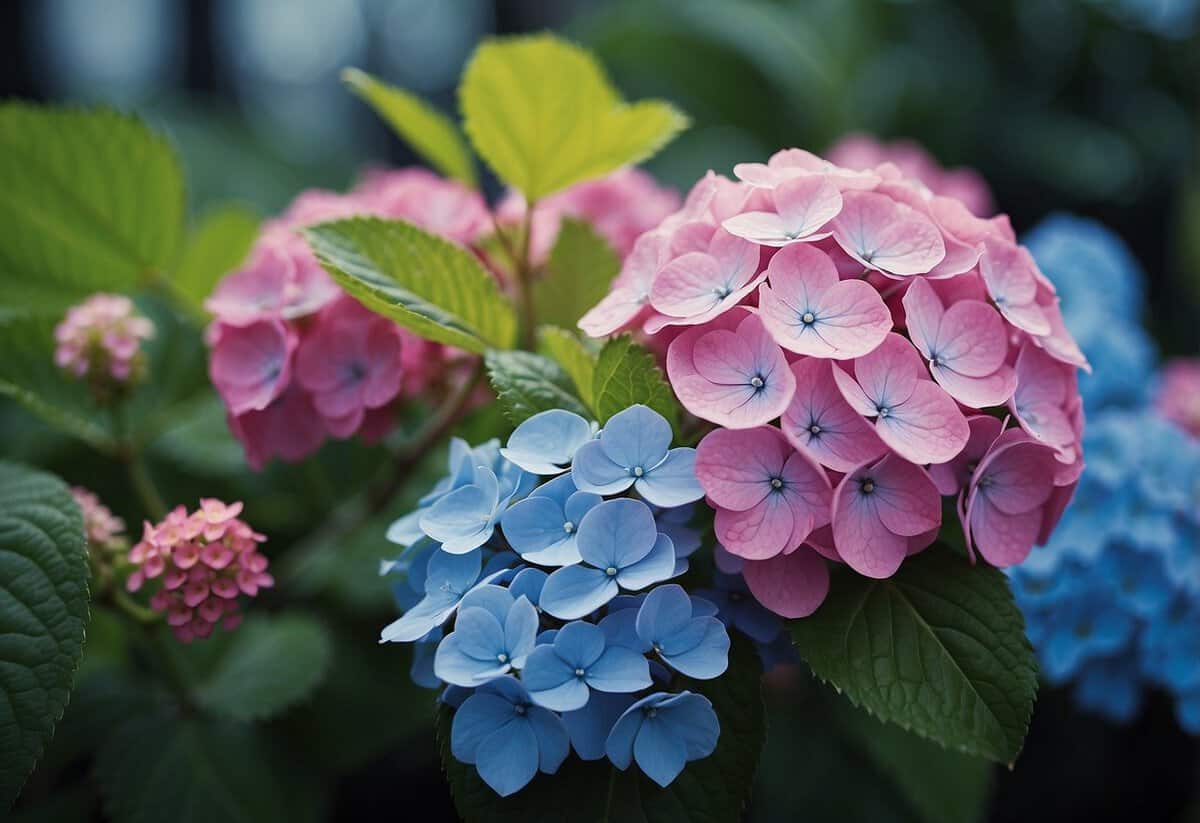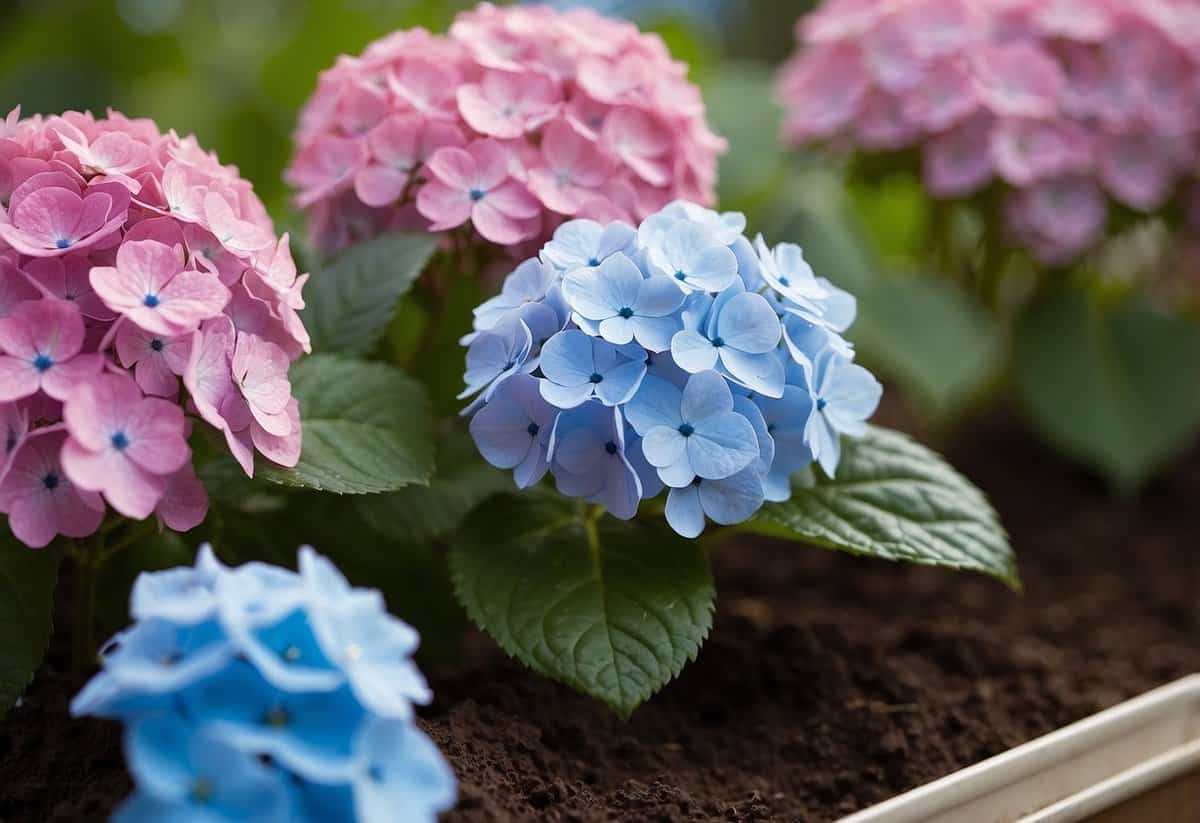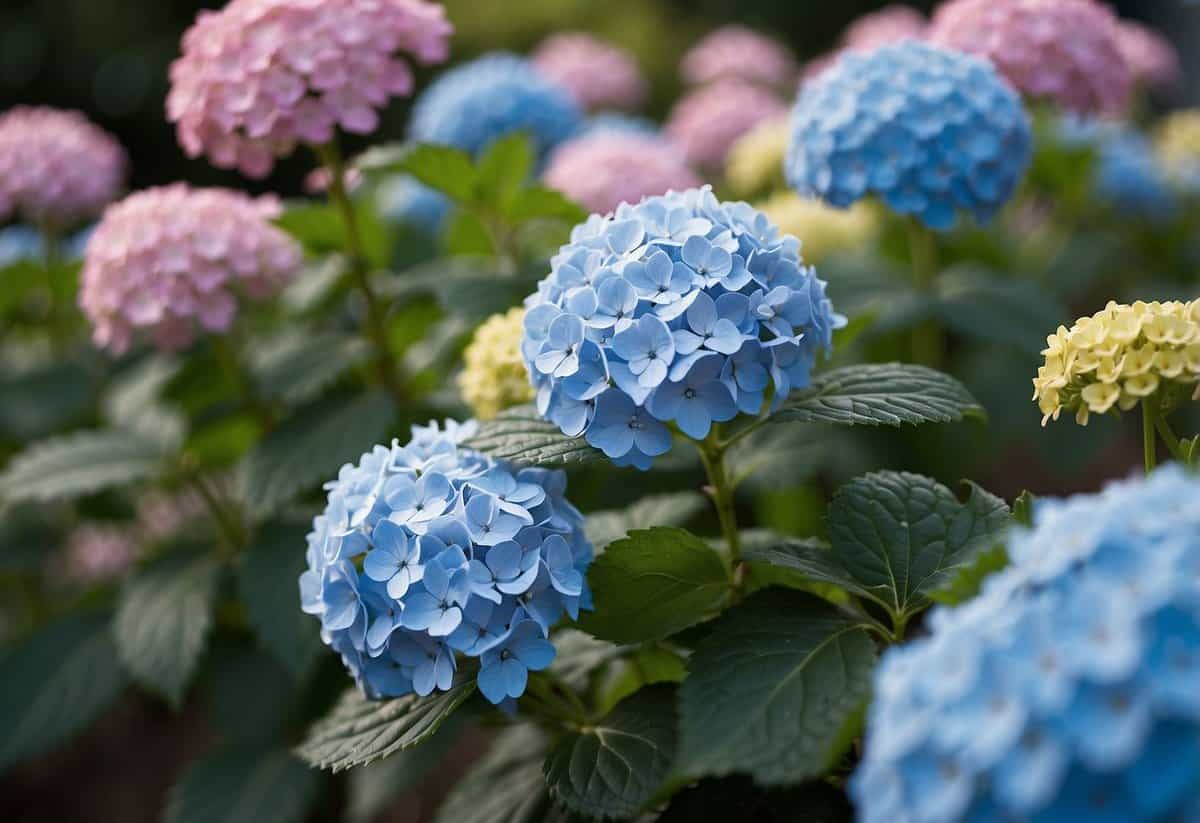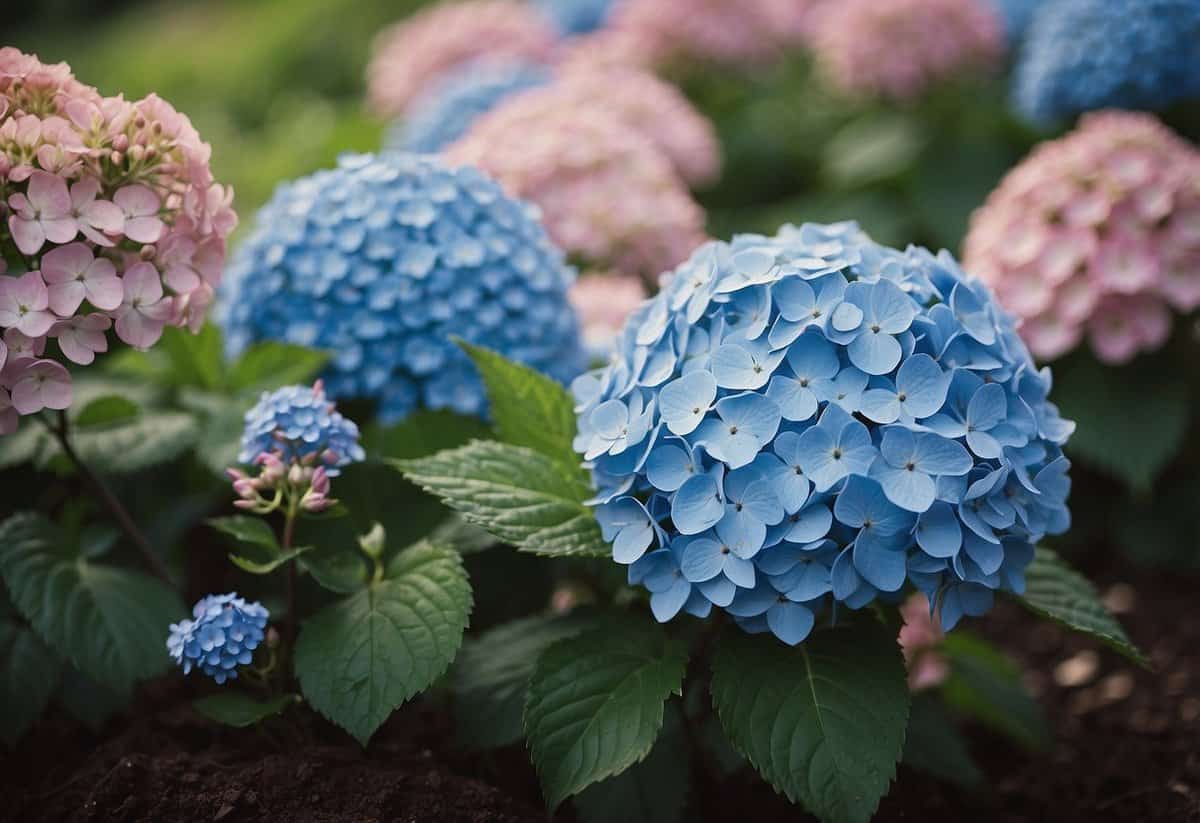How to Change Hydrangeas from Pink to Blue: A Simple Guide
Do you love your pink hydrangeas but wish they were a stunning blue? You can easily change the color of your hydrangeas from pink to blue by adjusting the pH level of your soil. This magical transformation happens when the soil becomes more acidic, typically with a pH level of 5.5 or lower.

To do this, you can add aluminum sulfate to the soil, which helps to increase acidity. Another simple trick is to dilute one cup of apple cider vinegar in a gallon of water and use it to water your plants. If you’re out of apple cider vinegar, white vinegar works too, but it’s stronger, so use it sparingly.
Ready to see your garden pop with blue hydrangeas? Keep reading to find out the exact steps and tips to make this beautiful change happen.
Understanding Hydrangea Color Changes

The color of hydrangeas can be influenced by soil pH and the type of hydrangea you are growing. Knowing how these factors affect the color can help you achieve the desired shade for your garden.
The Role of pH in Hydrangea Color
Soil pH plays a key role in determining the color of hydrangea blooms. Most blue hydrangeas occur in acidic soil with a pH level of 5.5 or lower. You can increase soil acidity by adding diluted apple cider vinegar or aluminum sulfate.
On the other hand, pink hydrangeas thrive in alkaline soil with a higher pH, around 6.0 or above. You can raise the pH by applying garden lime. Regular soil testing is essential to monitor and adjust pH levels appropriately.
Different Hydrangea Varieties and Their Colors
Different types of hydrangeas offer various color possibilities. The most famous types for color changes are hydrangea macrophylla and H. serrata. These varieties can produce blue, pink, or even purple flowers, depending on soil pH.
Bigleaf hydrangeas, such as hydrangea macrophylla, are often the best for color manipulation. Mountain hydrangeas (H. serrata) follow a similar pattern. Some varieties, like white hydrangeas, don’t change color based on pH. These remain white regardless of soil conditions.
Altering Soil pH for Color Modification

To change hydrangea colors, you need to adjust the soil’s pH level. Making the soil more acidic turns hydrangeas blue, while increasing alkalinity turns them pink.
Making Soil More Acidic for Blue Hydrangeas
To get blue hydrangeas, make the soil more acidic. Aim for a soil pH between 5.0 and 5.5. Adding aluminum sulfate is one way to lower the pH. Mix it into the soil according to the package instructions, especially during early spring or late fall.
Coffee grounds and vinegar also help acidify the soil. Mix coffee grounds into the top layer or dilute vinegar in water and pour it around the plant. Keep in mind frequent applications might be necessary.
Use a pH meter or a soil test kit from a garden center to regularly monitor the pH levels. Doing this helps you maintain the desired acidity and ensures that your hydrangeas stay blue.
Creating Alkaline Soil for Pink Hydrangeas
To turn blue hydrangeas pink, you’ll need to increase soil alkalinity. Aim for a pH between 6.0 and 6.5. Lime is commonly used to make soil more alkaline. Spread it evenly around the base of your hydrangeas and water it in well.
You can also use crushed eggshells. They slowly add calcium to the soil, increasing its alkalinity. For faster results, use finely ground limestone. Apply either option regularly to keep the soil’s pH at the right level.
Check the pH levels often with a pH meter or soil test kit. This ensures the soil remains at the correct alkalinity to keep your hydrangeas pink.
Testing and Adjusting Soil pH Levels
Testing soil pH is crucial for changing hydrangea colors. Soil test kits are available at garden centers. To use one, take a small soil sample and follow the kit’s instructions.
For a quicker check, use a pH meter. Simply insert the probe into the soil and read the pH level. Knowing the current pH helps you decide what amendments are needed.
For precise adjustments, follow the recommended application rates of any products you use, whether you’re raising or lowering the pH. Regular monitoring ensures that your hydrangeas stay the color you want.
Caring for Hydrangeas During the Color Change Process

To successfully change your hydrangeas from pink to blue, you need to ensure proper watering, lighting, fertilizing, and pruning. Each step plays an important role in maintaining healthy hydrangea blooms and achieving the desired flower color.
The Importance of Proper Watering and Lighting
Hydrangeas need plenty of water to thrive, especially when altering the flower color. Ensure the soil is consistently moist but not soggy. Water deeply once or twice a week, depending on the weather. Using mulch can help retain soil moisture and keep roots cool.
Lighting is another critical factor. Hydrangeas prefer morning light and some afternoon shade. Too much direct sunlight can scorch the leaves and stress the plant, affecting its bloom quality and color change process.
Creating the right mixture of water and light helps keep the hydrangea flowers healthy and vibrant during the transition period.
Fertilizing for Healthy Growth and Vibrant Blooms
Fertilizing is essential for growing healthy hydrangea blooms. Use a high potassium fertilizer to promote vibrant blue flowers. Avoid high nitrogen fertilizers, as they encourage leafy growth over blooming, hindering color change.
Additionally, incorporating organic matter like compost or aged manure improves soil quality. For blue flowers, adding hydrated lime can help increase soil acidity. You can also use a balanced, slow-release fertilizer specifically formulated for hydrangeas. Follow the instructions on the fertilizer package to avoid over-fertilizing, which can damage the plants.
Keep a close eye on the plants’ reaction to fertilization, and adjust the amounts as needed. This ensures your hydrangeas get the right nutrients to support their color transformation.
Pruning Techniques for Optimal Flowering
Pruning your hydrangeas correctly is crucial for maintaining healthy blooms and aiding their color change process. Start by removing dead or diseased wood. This helps direct the plant’s energy towards new growth.
Additionally, prune any weak or overcrowded branches to improve air circulation. This reduces the risk of disease and promotes the development of healthy buds for the next season.
Be careful not to cut too much or too close to the base. Aim to prune right after the blooms have faded, as this encourages more robust flowering in the next cycle. Proper pruning keeps your hydrangeas looking neat and supports their journey from pink to blue flowers.
Implementing Organic Methods for Color Transformation

By tweaking the acidity of your soil using natural ingredients, you can transform the color of your hydrangeas from pink to blue. Using organic matter, you can both adjust pH levels and enrich your soil, ensuring healthier and more vibrant hydrangea plants.
Natural Additives to Adjust Soil Acidity
To shift your hydrangeas to a blue hue, you need to make your soil more acidic. Adding pine needles, compost, peat moss, and coffee grounds can help achieve this.
-
Pine needles and compost are great for increasing soil acidity while adding beneficial organic matter. Spread a layer of these materials around your hydrangea plant.
-
Peat moss is another effective option. Mix it into your soil to lower the pH naturally.
-
Coffee grounds from your kitchen can also help. Sprinkle used grounds around the base of your plant.
Vinegar is another method to acidify soil. Dilute a cup of vinegar in a gallon of water and pour it around the roots. This will provide a quick pH adjustment, though it needs to be repeated regularly.
Understanding the Long-Term Impact of Organic Materials
Using organic materials not only changes the soil’s pH but also improves its structure and fertility.
Eggshells can be added to your compost mix. Over time, they break down and provide calcium, which, in smaller amounts, helps plants thrive without significantly affecting pH levels.
Fruit peels from your kitchen can also be composted. They add nutrients and improve soil health as they decompose.
Note that patience is key with organic methods. They work gradually, so consistent application is necessary.
Using aluminum sulfate may speed up the process of turning your hydrangeas blue, but be cautious with quantities as it can be harsh on plant roots. It’s still possible to achieve stunning blue flowers through organic means with regular care and monitoring.
Troubleshooting Common Issues in Hydrangea Color Change

Changing the color of hydrangeas from pink to blue involves altering the soil’s pH and incorporating aluminum. You might face challenges such as plants not changing as expected or the process taking longer than anticipated.
Dealing with Stubborn Plants: Why Some Hydrangeas Resist Change
Some hydrangeas, like Hydrangea macrophylla (mophead) and Hydrangea serrata (lacecap), may resist color change even with proper soil adjustments. This resistance often happens because of the plant variety and the existing soil conditions.
First, check your soil pH. If it’s not acidic (around 5.5), even adding aluminum sulfate may not work. Some hydrangea types like Endless Summer are more adaptable, while others are not.
Next, confirm the soil’s aluminum content. If there’s not enough, the flowers won’t turn blue. Adding more aluminum sulfate can help. Be aware that overdoing it can harm plants, so follow product guidelines carefully.
Managing Expectations: The Gradual Nature of Color Transformation
Changing hydrangea colors is a slow process. Expect it to take months, as the flowers need time to absorb nutrients and exhibit color changes. It’s not immediate, so patience is key.
Start by ensuring continuous and proper pH adjustments. Use garden lime to raise pH for pink flowers and sulfur or aluminum sulfate to lower it for blue flowers. Regularly test the soil to check pH levels.
Hydrangeas like mountain hydrangea and lacecap may take longer because they adapt slowly. Plant growth cycles and environmental factors also play a role, so expect gradual changes. Keeping hydrated lime and other soil amendments on hand can speed up the process, but remember to manage expectations realistically.







